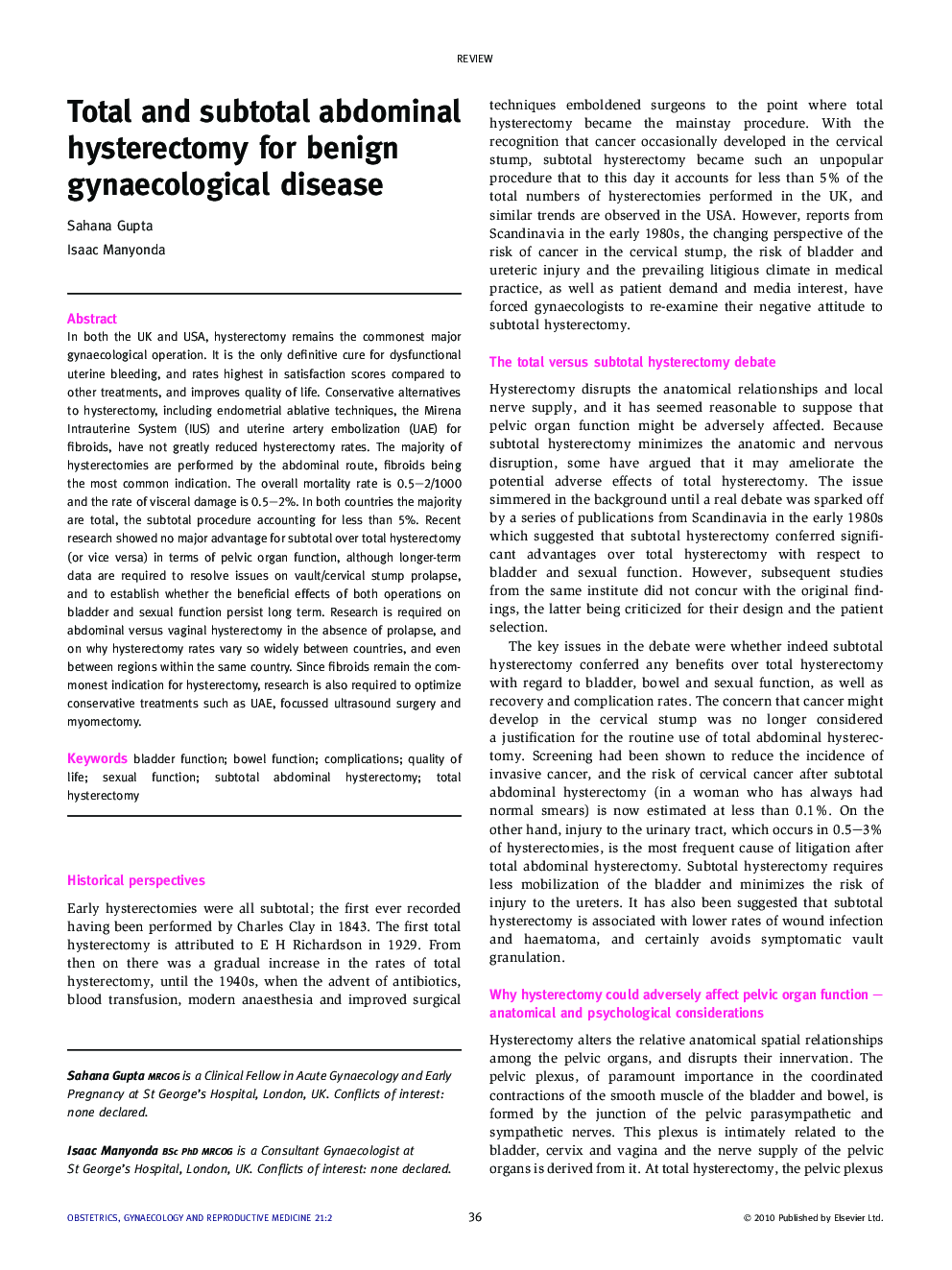| Article ID | Journal | Published Year | Pages | File Type |
|---|---|---|---|---|
| 3967212 | Obstetrics, Gynaecology & Reproductive Medicine | 2011 | 5 Pages |
In both the UK and USA, hysterectomy remains the commonest major gynaecological operation. It is the only definitive cure for dysfunctional uterine bleeding, and rates highest in satisfaction scores compared to other treatments, and improves quality of life. Conservative alternatives to hysterectomy, including endometrial ablative techniques, the Mirena Intrauterine System (IUS) and uterine artery embolization (UAE) for fibroids, have not greatly reduced hysterectomy rates. The majority of hysterectomies are performed by the abdominal route, fibroids being the most common indication. The overall mortality rate is 0.5–2/1000 and the rate of visceral damage is 0.5–2%. In both countries the majority are total, the subtotal procedure accounting for less than 5%. Recent research showed no major advantage for subtotal over total hysterectomy (or vice versa) in terms of pelvic organ function, although longer-term data are required to resolve issues on vault/cervical stump prolapse, and to establish whether the beneficial effects of both operations on bladder and sexual function persist long term. Research is required on abdominal versus vaginal hysterectomy in the absence of prolapse, and on why hysterectomy rates vary so widely between countries, and even between regions within the same country. Since fibroids remain the commonest indication for hysterectomy, research is also required to optimize conservative treatments such as UAE, focussed ultrasound surgery and myomectomy.
